“It’s quite difficult as the woman in the partnership to be seen”: An interview with Yulia Mahr
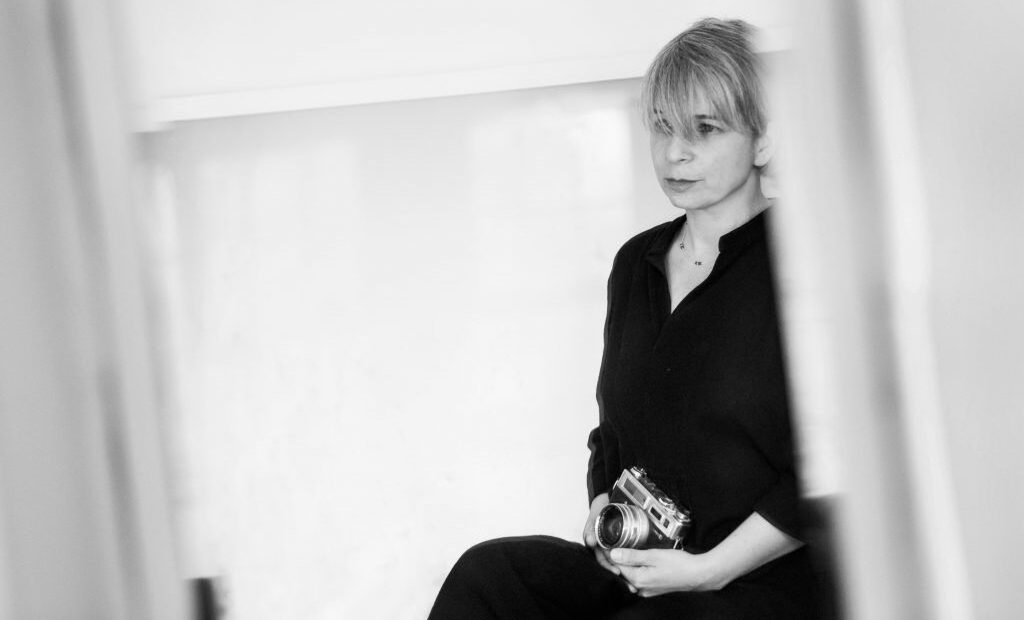
The collaboration between visual artist Yulia Mahr and composer Max Richter goes back 30 years to when Mahr, in fact, gave Richter his first job. Three kids and an impressive collection of innovative projects and a creative studio later, it’s a professional and personal partnership that has gone from strength to strength.
Just released is Voices 2, the second part of Voices, which launched last year and took as its starting point the Universal Declaration of Human Rights, prompting its audience to take time and space to really contemplate a text most people are aware of but have never really read. It featured the voices of Eleanor Roosevelt and Kiki Layne reading the text, as well 70 other crowd-sourced voices.
Mahr’s stunning visuals were created in parallel with Richter’s post-minimalist soundscapes, such as for Prelude II, which draws on her memories of drowning as a child, as well as referencing the thousands of migrants who have died searching for a new life via the sea. This latest project follows up critically-acclaimed Sleep, an eight-hour overnight piece, and the Sounds and Visions curated programme at the Barbican in 2018.
We had the pleasure of speaking to Bafta-winning Mahr about why she and Richter were driven to create a project based around the Universal Human Rights Declaration, her optimism for the future and how “wife-ism” in the way those in artistic relationships are perceived is still very real.
First up, can you tell us a bit about your collaboration with Max Richter? Where it all began and what’s led you to this point?
So Max and I have actually been working together for coming up to 30 years this May. We met when we were really, really young – we were in our early 20s. I was putting together a theatre production and we needed a composer; I met him and interviewed him, and actually wasn’t too sure about him! But I gave him his first job. And then it started from there, really. It’s taken many forms over the years. We’ve also got three kids and done a lot in our lives, so there’s many forms it’s meandered through. But yeah, so often we feel like we have a laboratory here. We start a lot of projects but not all of them get through. So we’re always talking, always experimenting, always concocting different scenarios and things that we might get up to. And then, suddenly, one of the projects will come together. Then at that point, we start working on it and we push it through – and again, that’s taken various forms. The ones that are most known recently would be Sleep and Voices. And now we’ve started a third project, which isn’t a musical project at all, but it’s a studio that we’re building: a creative hub that we’re making for lots of artists to come together. So it’s part of the same intention as all our work, but it’s in a physical building, as opposed to a piece of music.
Amazing! And obviously, the album that’s just released is Voices 2 but this is part of a broader project that started last year, Voices. Could talk us through how it all fits together and the way it’s rooted in the Universal Human Rights Declaration?
So, we’ve been thinking about this topic for a really long time. It partly comes out of my own life story (which is very much about migration and movement across the last 100 years via my family), and Max’s own story and his thoughts on politics and what was happening – especially around the time of Guantanamo – and post-truth politics. And how disturbed we were by the whole thing. The idea that we’re really losing these fundamental rights that we all have and that society and global politics are changing very rapidly. I mean, there are really big problems now aren’t there? And as, with the rise of these huge corporations and right-wing politics and nation states, we’re losing them, and there needs to be a conversation again. So we started thinking a lot about that in relation to my own story. We started to look around for something that was hopeful, rather than something that was really dire, and we found it within this text, which is such a beautiful text. What we realised was that, although lots of people have heard of it, almost nobody’s read it. And if they’ve read it, they haven’t really taken it in and they’ve kind of “othered” it – it’s about people in faraway places that get tortured – and of course, it’s relevant – really relevant – to them. It’s just as relevant to us, all of us, and it belongs to all of us, and we really need to start thinking about it in those terms. So that’s what motivates the projects: trying to find hope and finding it in this fantastic document coming out of 1948, and thinking that it was time to re-examine it. For Voices, we picked certain articles and had Eleanor Roosevelt handing it to Kiki Layne to read – we really wanted this idea of the youth and future taking it forward, breathing into existence the world we would like to see. And Voices 2 is about just having time to sit with that – because it’s a big thing, it’s a big text – having time to think with it and dream with it. We feel that there is a way to create a better, more egalitarian future for us all, and that the text maybe is a cornerstone of that.
What’s your process in terms of creating the visuals? When we think of music videos, perhaps, typically, the music is created first, and then the visual aspect might come along after – is this more of a symbiotic process for you both? How do you get to these final images?
Well it wasn’t how we intended it at all! It was supposed to be this project that we did at the same time, this time, and it was supposed to launch all together. And then of course coronavirus happened. Well, first of all, Max was incredibly late delivering it – he was supposed to deliver about a year ago, but it really got delayed. It took a long time for him to really think through his ideas about Voices, so it was really right up to the wire. And then coronavirus happened, and suddenly everything collapsed. So it ended up being this musical project without the visuals. And then I started to make the visuals. In a way, it wasn’t what I was expecting at all, but it’s been a really liberating process, the way it happened. I’m thinking about what’s going on today, as I’m working on the films and trying to say what I feel about what’s going on today through this visual medium. And so it’s very much like a call and response with the politics of what’s happening all the time. So it’s been really good in that way. I’ve never had that experience before.
From a technical aspect, how do you put these together? Does it start with finding and using archival footage, then editing and adding in computer graphics?
Yes, it’s really interesting. I have a background in painting as well as film, and I’m not interested in commercial film at all – I’m really interested in using filmmaking techniques to do something quite different, to look at things from a different angle. And one of the things I’ve been doing is using a lot of found footage – archive footage and even stock footage – which came in incredibly useful this year, because, of course, we couldn’t leave! We had to be very locked down in our household for various reasons. I thought, “How am I going to make these films?”. So I leant back into that part of my practice. I spent most of the year searching through a lot of footage and finding tiny little things that resonated with me, and then putting them together. So the base of these films is on pre-existing footage, then, on top of that, I’m often changing the colours and I’m animating it, I’m repurposing it, I’m slicing it and reordering it and all those kinds of things – so it doesn’t look at all like the original thing that it comes from – and making these narratives out of it. So it’s a bit like a poem, or more like how a poet or an artist would definitely work rather than a filmmaker. Or collage. Something like that.
Your videos have a distinctive style. What would you say that makes the videos noticeably your work, what do you think gives them that thread?
I mean, I don’t know anybody else working like this, or working with this kind of painterly sensibility in film, I don’t really see people merging mediums like that. I’m choosing colours very deliberately and very carefully, or looking at the way they’re talking to each other – which is a funny thing to say, but the colours do! And so it’s a really long process to make these little films. They’re tiny. They’re like Haiku poems, but they take a long time to make.
In the most recent film, Prelude II, with the image of being submerged there is a reference to migrants trying to cross waters and drowning, but there’s something quite beautiful – sort of dreamlike – about it as well. Can you talk us through what inspired that one?
I almost drowned when I was a child. I was saved at the very last moment by my mother. It was a really, really close thing, and I remember that experience so vividly to this day. It’s extraordinary. Everything was in slow motion, and very, very dreamy. I wasn’t panicked, funnily enough. It was – yeah, dreamy is the best way to describe it really. But it did feel really inevitable; it did feel like something’s happening that I had no control over anymore and my body was going into some kind of convulsion, I was no longer really me. And so I wanted to incorporate that into this film, that feeling that I had when I was submerged. I don’t know if it’s a universal experience – I’ve never talked to anybody else. I don’t know if other people also have this experience of drowning, but it was certainly mine as a child. And, obviously, I was thinking a lot about children in the making of this: the children I’ve given birth to as well and amniotic fluid and how that feeling of floating also gives us life. And so I wanted to draw on all that in the making of this film. So that’s why it has the atmosphere it does.
Are you hoping that, as we approach the summer, there will be a moment for you to have live performances where you display the work as well?
They were all cancelled! We had 18 months of performances that were cancelled virtually overnight, of course. That’s very unusual for us. I mean, there’s usually a lot of shows – especially with Sleep there were a lot of shows. But it’s starting to come back slowly. Max will play Voices at Crystal Palace in the summer, and hopefully in Germany in October. So things are slowly restarting in some countries. I really miss it. I don’t know about you, but I miss live performance so much – getting together with other people and just just having the energy around you. And obviously, it’s our livelihoods, but it means so much more than that, doesn’t it? This kind of communal experience. So I can’t wait.
Do also think there’s also been the flip side that, although we haven’t been able to enjoy live performances, a lot of people have found their escape in listening to music or watching film or music videos online? Do you think music has provided a bit of a lifeline in the way that we can still enjoy it, even if we’re not able to get out and about?
Yes, certainly. We have so many letters from people telling us about the solace they find in the music and the projects. Even independently of Max’s music, if I think about what this year has been for me, it’s definitely been about disappearing into the refuge music and film have provided. And, well, it’s a huge argument for culture to be sustained and supported, isn’t it? It’s very fundamental to us. And we often lose contact with it, I think, because often these art forms are so commercialised, at the end of the day. Sometimes it feels like somebody else is creating this thing. I think it took down a lot of barriers, actually, in how people experienced work.
Alongside this project having been put out over the last year, not only has the pandemic happened, but we had the Black Lives Matter protests, all the things happening in our political sphere here, and Trump being voted out in the US. Plus, at different moments, we’ve had a varying spotlight on human rights and on immigration. Has that shifting political environment recontextualised your work?
People listen to it as it’s appropriate to them – that is the thing that really changed this year. We’ve been working on this for ten years, so when we were trying to talk to people about this project that was coming, everyone was like, “Oh, yeah. How nice.” It was this thing, this other thing, that was about other people. And I think what we found in putting out the project this year is that it really speaks to people across the UK, across America, other countries where you wouldn’t necessarily expect people to be so interested in human rights. And that’s what I think is the big difference. Just, what a year. What an extraordinary, extraordinary year.
You’ve mentioned trying to bring in an element of optimism. Do you feel hope for the future? There does seem to be more of an activist spirit in the generation that’s coming up behind us – people are getting out in the streets and protesting. Even in the context of the attention we give to the 20,000 migrants who have lost their lives trying to cross seas, do you think we are becoming more empathetic or standing up for what we believe in?
Well, I really feel that history is not inevitable. I keep repeating that because, certainly in the past, it felt to people that we’re just on this forward-moving thing. And it isn’t inevitable at all. I think with this younger generation coming up, there is that feeling around that we can collectively change things. It’s a bit of a scramble and it’s a bit messy and it’s all over the place at the moment that energy – but I definitely feel a sea change coming on again. And that’s wonderful. I feel so hopeful. I do. I mean, obviously, there are huge challenges, and there are lots of people in positions of power who don’t have this in their hearts, do they? But I do think that there is a possibility to create fairer systems for everybody to live within.
What are your hopes for the whole arts and culture industry, post pandemic? What do you think needs to be done to make sure even the smaller organisations and independent artists can survive and keep creating?
Well, I’m hoping for funding to come back. I remember, in the 80s when there was funding around, I remember that first art project that I got Max to be part of – I got money from the London Council. It wasn’t very much, but it was enough to stage it and we had to apply and we got it. It’s so hard these days to get that kind of money. And I really hope that there will be this new appreciation of art. It’s not food, it’s not heating, is it? But it is really important somehow for communication and community. And I really hope that funding comes back, and also a return to localism and liveness that’s very real, that’s very much about people in their own communities creating work. It doesn’t have to be these big pop stars and big film stars. It can be us in our local communities gathering again.
So what does the next year look like for you? There’s the date at Crystal Palace you mentioned. Will you be doing a project at the Barbican as well?
We’re doing something in Germany. We did a weekend at the Barbican in 2018. And we’re doing another weekend in Germany at the Elbphilharmonie. But also, Max and I, we decided to work a bit separately as well, in a way. It’s been a long time, we’ve worked together for so long, but it’s quite difficult as the woman in the partnership to be seen. And we’re really aware of that. I’m going to do some big projects without Max, now that I’ve got in motion. So yeah, I’m really looking forward to that.
Is that sometimes a challenge, when there’s the two of you putting work out together to put your own individuality forward?
Not that – within our relationship it’s incredibly equal and very creative – but within the outside world. You know, I really thought that that glass ceiling for women was broken, and I really thought that that idea of the woman in an artistic relationship – I thought that we’d solved that. These women artists in the 50s and 60s who faced not being recognised for their work, I thought we’d solved that, but we haven’t at all. And it’s really obvious that there is still huge amounts of sexism. And wife-ism, actually. It’s wife-ism, as well. And how to move beyond that? We’re forever trying but it’s like this massive mountain in front of us we’re trying to shift, and it can be really difficult. So, yeah, whenever we do a project together, it’s seen as Max’s. But it isn’t – it’s ours together.
You would think in this day and age that wouldn’t happen as much, especially because it doesn’t come from within.
You’re invisible, you know? And it’s really – it’s perplexing, actually, to look at it. And we’re constantly scratching our heads: why? Why do people always assume that he’s done something or he’s creating something? Or it’s his voice that they’re hearing? It isn’t, it’s a joint voice. And it’s fascinating. We’re surprised by the journey of it, especially because it doesn’t come from us – that’s what’s so strange about it, because within our own relationship, we’re really equal and we really love working together so much. I remember when we did the Barbican gig – we programmed a Barbican concert series together, and journalists were not willing to interview both of us together. Only Max. And that’s happened for years. You know, if an article is written about the two of us, I’ll be written out and at the end, “He lives with his wife and children in Oxfordshire”. They write me out. And it’s really interesting. Why do we do that?
It must be frustrating that you need to carve your own path – not necessarily because it’s what you want, but because the media is just not accepting you as this equal partner?
It’s interesting. I mean, some women might be happy with it, but I feel a bit strange about it. I don’t like it too much. So it’s my own decision to think, “Okay, I’ll work on some different things for a while.” And then we’ll work on a project again together, but maybe not for a little while. Yeah, it’s really surprising that it’s still around, but it is – very much so. It’s really interesting how it’s perpetuated in the media, as well as everywhere else.
It’s perhaps one of those things that has so many different factors that play into it – whether it’s publicists journalists, the arts community – that it’s hard to pinpoint where the problem is.
Well, we live in a click culture, don’t we? We live in a click culture, where even journalism now needs people to click on the article. And why do people click on an article? And who are they clicking for? That’s shaping journalistic narratives, even, I think. I mean, you have to tell me more, but that’s what it seems like from the outside anyway, sometimes. Maybe not at The Upcoming because I see you guys do a lot of really interesting articles about people who aren’t necessarily so much in the spotlight! But certainly, at a lot of the broadsheets, that’s going on.
There does often need to be a name somewhere in the headline that pulls in, particularly with the nationals, and that can be constraining for people who work in journalism. It feels like the system’s a bit broken.
Algorithms are ruling us, aren’t they?!
Indeed! Well, it’s been absolutely lovely to speak to you. Thank you so much for sharing all that with us about these wonderful projects. We can’t wait to see what you guys do in the summer and beyond.
Thank you very much. Lovely to chat to you.
Sarah Bradbury
Voices 2 is released on 9th April 2021.
Read our review of the album here.
Watch the video for the single Mirrors here:


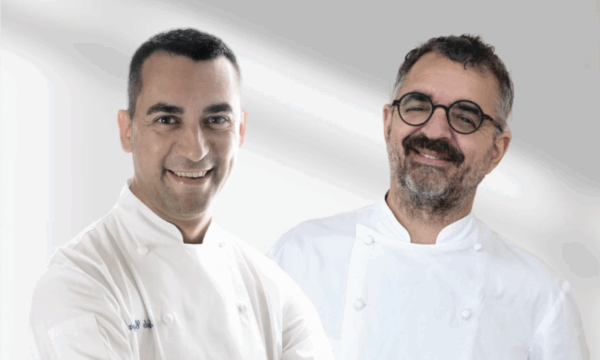
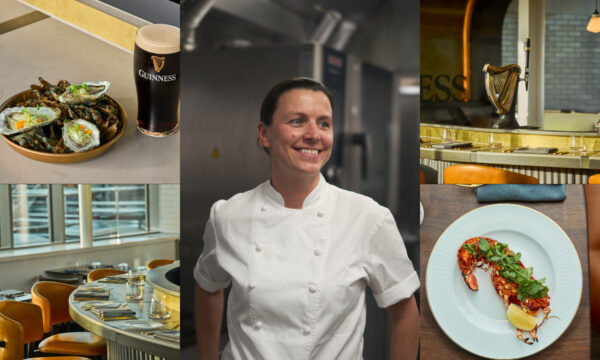

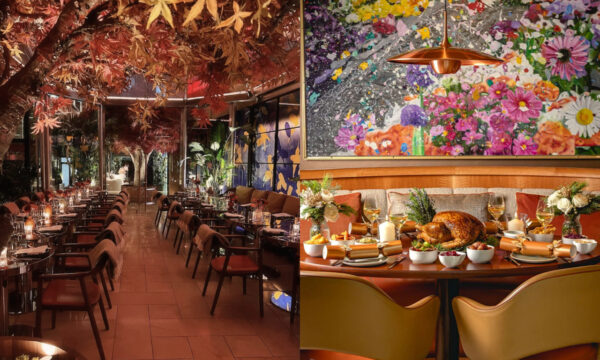
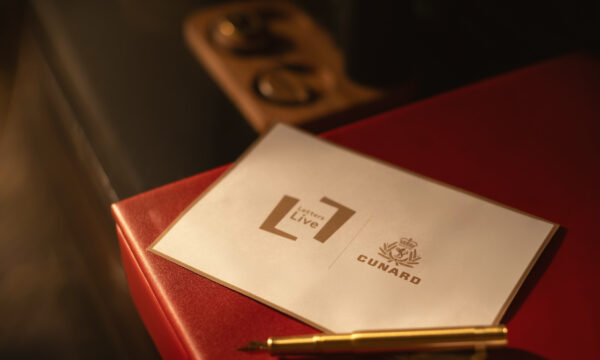
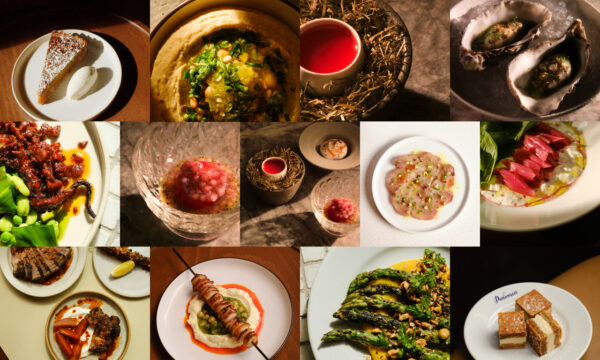
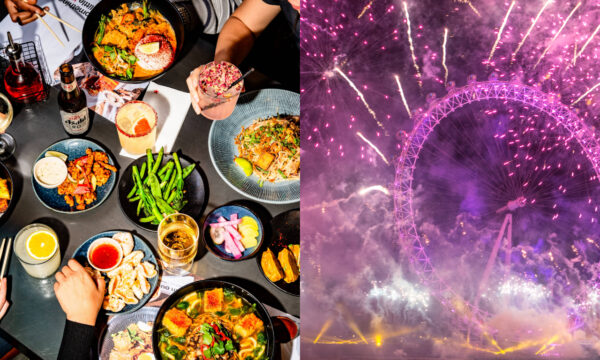

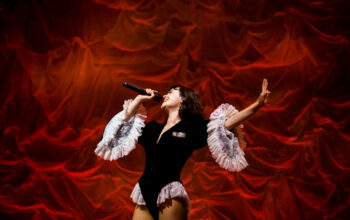
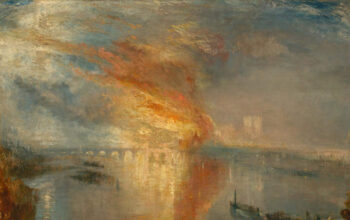
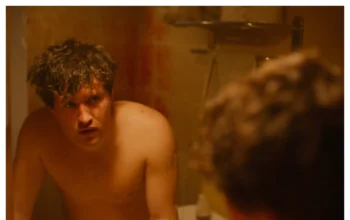
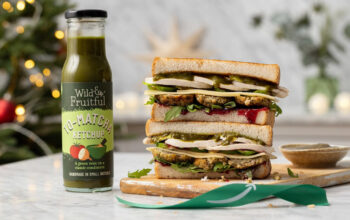
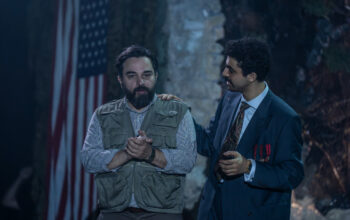
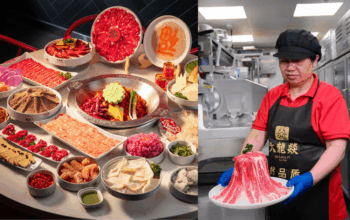
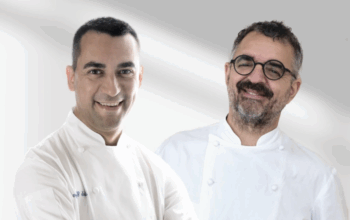
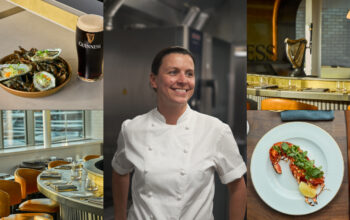
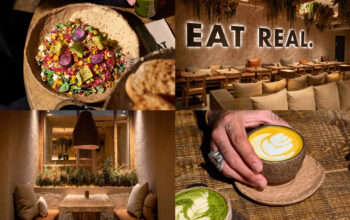
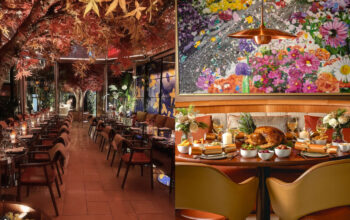

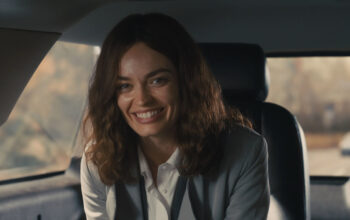

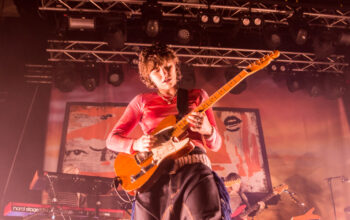
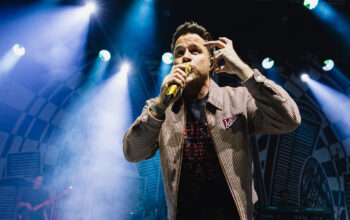
Facebook
Twitter
Instagram
YouTube
RSS